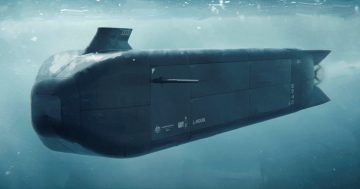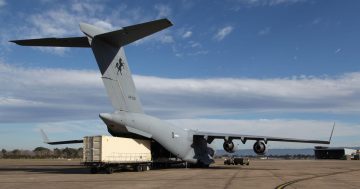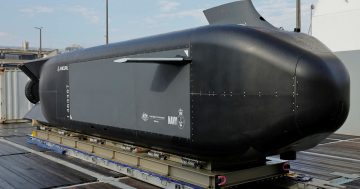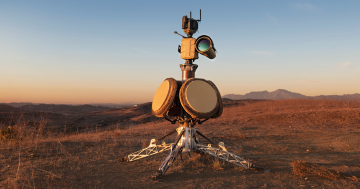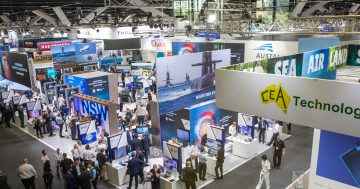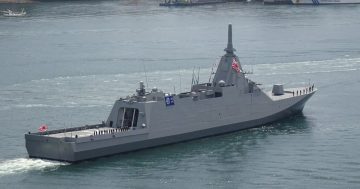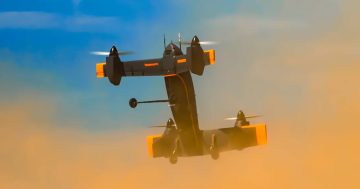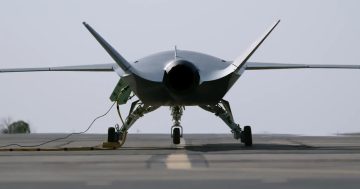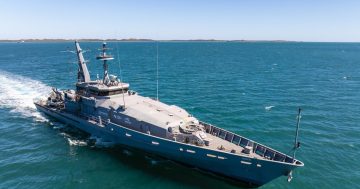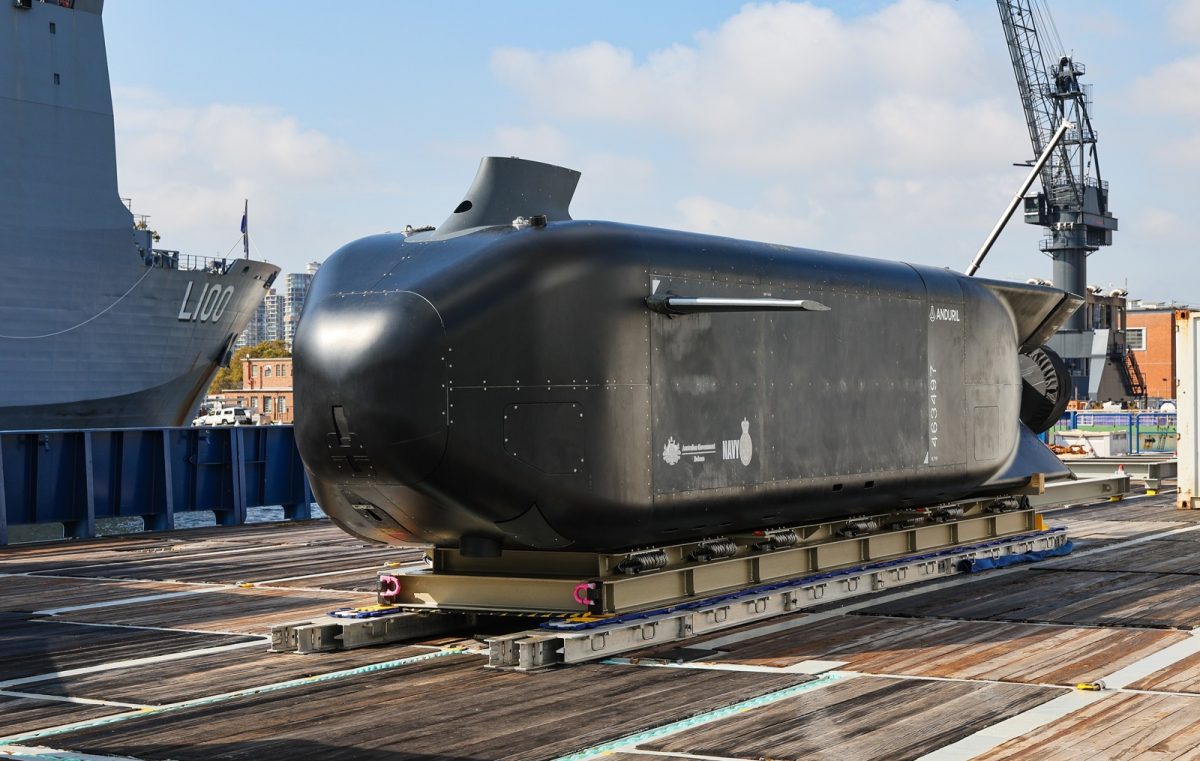
The first prototype Ghost Shark on the dock at Garden Island in Sydney. Photo: Anduril Australia.
Last week’s handover of the first of three Anduril Ghost Shark Extra-Large Autonomous Underwater Vehicles (XL-AUV) to the Royal Australian Navy was a major milestone in the Australian Defence Force’s ambitions to design and manufacture advanced sovereign autonomous capabilities.
The three-year program to develop an XL-AUV for the RAN was first announced in May 2022, with the $140 million co-funded partnership between the ADF’s Defence Science and technology (DST) Group and Anduril Australia to design, develop, manufacture and deliver three XL-AUV prototypes by mid-2025.
The XL-AUV is designed to be an advanced, affordable, autonomous, long-endurance, multi-mission capable uncrewed submarine which features modular and customisable payloads for reconnaissance or targeting missions. It won’t replace but will augment crewed submarines by providing an ability to cover wider areas, or by going places the RAN wouldn’t want to risk sending a crewed boat.
The RAN has understandably kept the potential capabilities of the Ghost Shark quiet, but it will likely have an endurance of several days or even weeks, and an ability to carry modular payloads such as signals and electronic intelligence sensors, electronic warfare, embedded and deployable sonar arrays, communications, and possibly weapons such as sea mines or torpedoes.
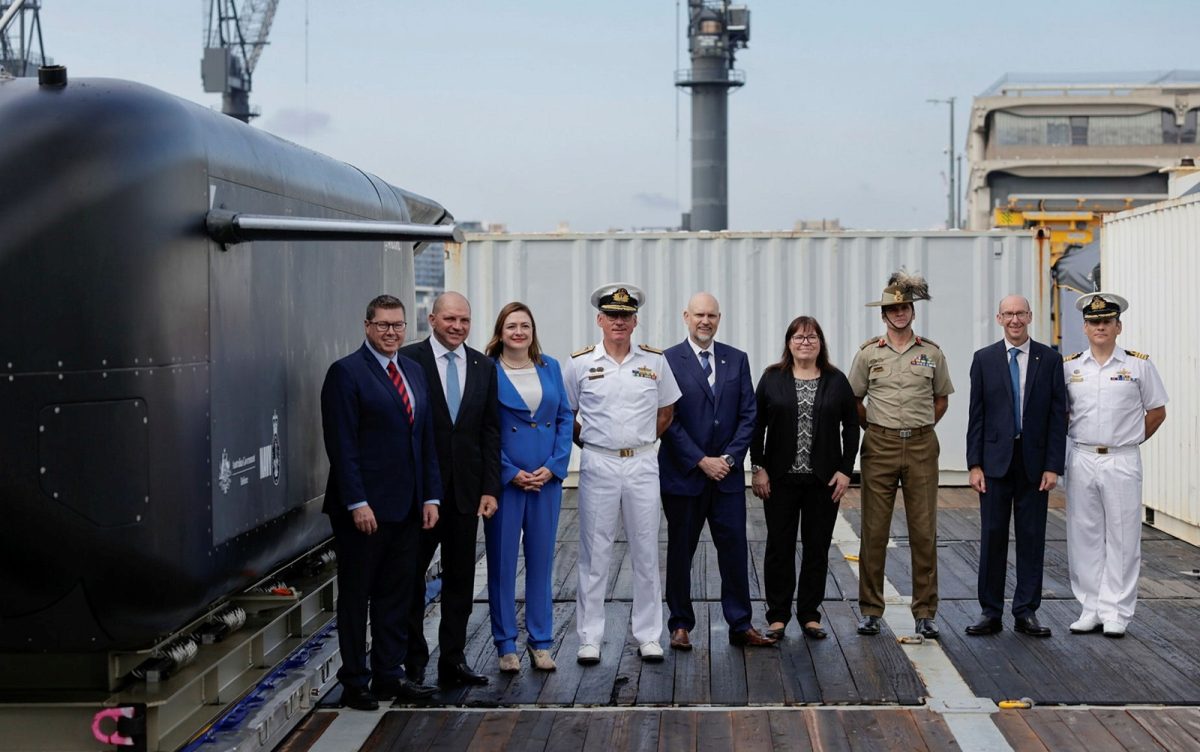
Defence Industry Minister Pat Conroy, Executive Chairman and CEO Anduril Australia David Goodrich OAM, Chief Defence Scientist Professor Tanya Monro, Commander Fleet Command RADM Chris Smith, Anduril Australia Senior Vice-President Engineering Dr Shane Arnott, and Head of the Advanced Strategic Capabilities Accelerator Professor Emily Hilder with other ADF officials on 17 April. Photo: ADF.
The design, development, and manufacturing work has been performed in Australia, and a local workforce with skillsets in maritime engineering, software development, advanced manufacturing, robotics, propulsion design, and mission operations has been assembled.
With Senior Vice-President Engineering Dr Shane Arnott on board, Anduril has been able to bring to the XL-AUV much of the rapid prototyping, modular, and autonomous design philosophy he developed for the Boeing Defence Australia’s Airpower Teaming System for the Royal Australian Air Force’s Ghost Bat (formerly Loyal Wingman) program.
When the XL-AUV program was launched, Anduril said the vessel would also be scalable, with a common nose and propulsion system able to be integrated with midsections of varying lengths that could be adapted to accommodate different payloads. The vessel’s range and endurance would likely depend on what payload modules were carried.
Previously described as the size of a “school bus”, the first Ghost Shark rolled out on 17 April is estimated to be about 15 metres long, and has a square cross section hull about three metres across, and a small ‘sail’ presumably with a retractable periscope and an ESM (electronic support measures) and communications mast.
With the delivery of the first Ghost Shark, Defence’s new Advanced Strategic Capabilities Accelerator (ASCA) will work with the RAN to prove the design and develop concepts of operation prior to committing to full-scale production of a fleet of XL-AUVs.
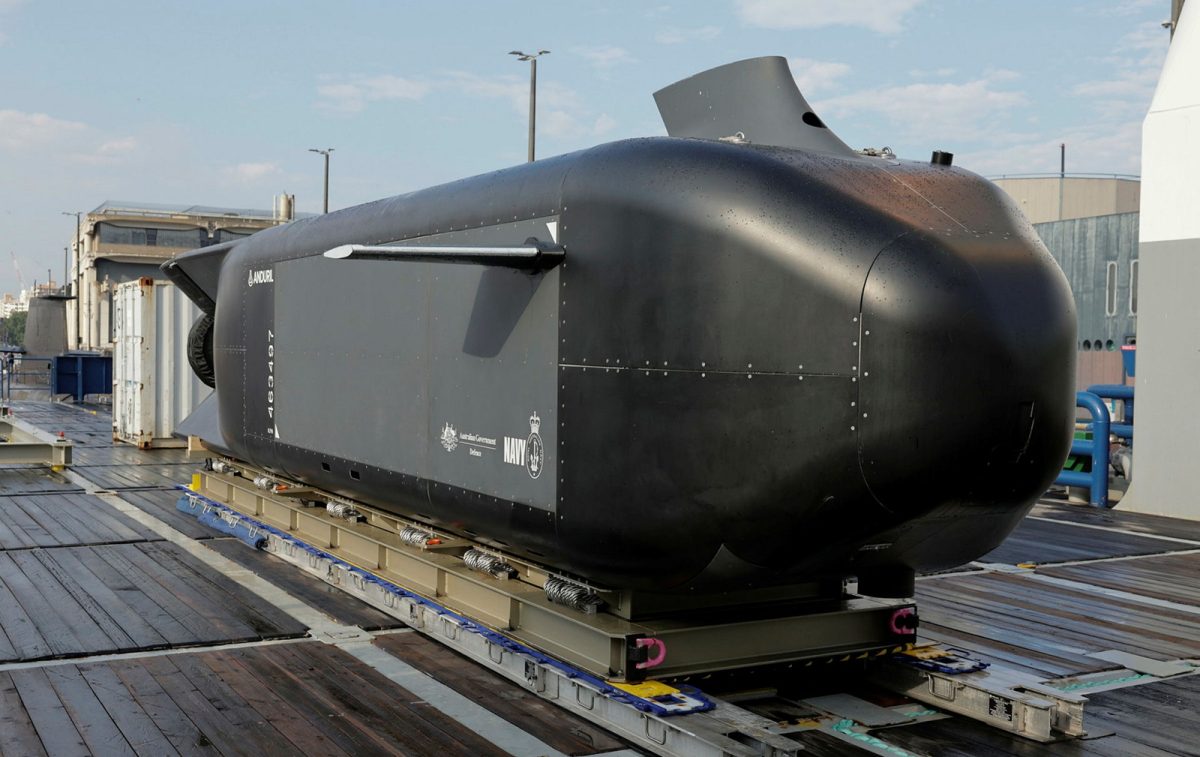
The Ghost Shark is about 15 m long and has a squared off hull section about 3 m across. Photo: ADF.
Chief Defence Scientist Professor Tanya Monro said the Ghost Shark program was well ahead of its three-year development schedule.
“Delivering the first Ghost Shark prototype ahead of schedule sets a new standard for capability development at the speed of need,” she said.
“The Ghost Shark program is delivering an operationally relevant capability within a fraction of traditional defence timelines. Early creation and testing of the first Ghost Shark has been critical for rapid learning and iteration – this is how we deliver advanced asymmetric capability.”
Executive Chairman and CEO Anduril Australia David Goodrich OAM described the timeline to design and produce three Ghost Sharks in three years in Australia as extremely ambitious.
“I am excited to report that we are ahead of schedule and, importantly for a Defence program, we are on budget,” he said.
“We’re moving incredibly quickly on this program in lockstep with our ASCA, DSTG and the RAN partners.”
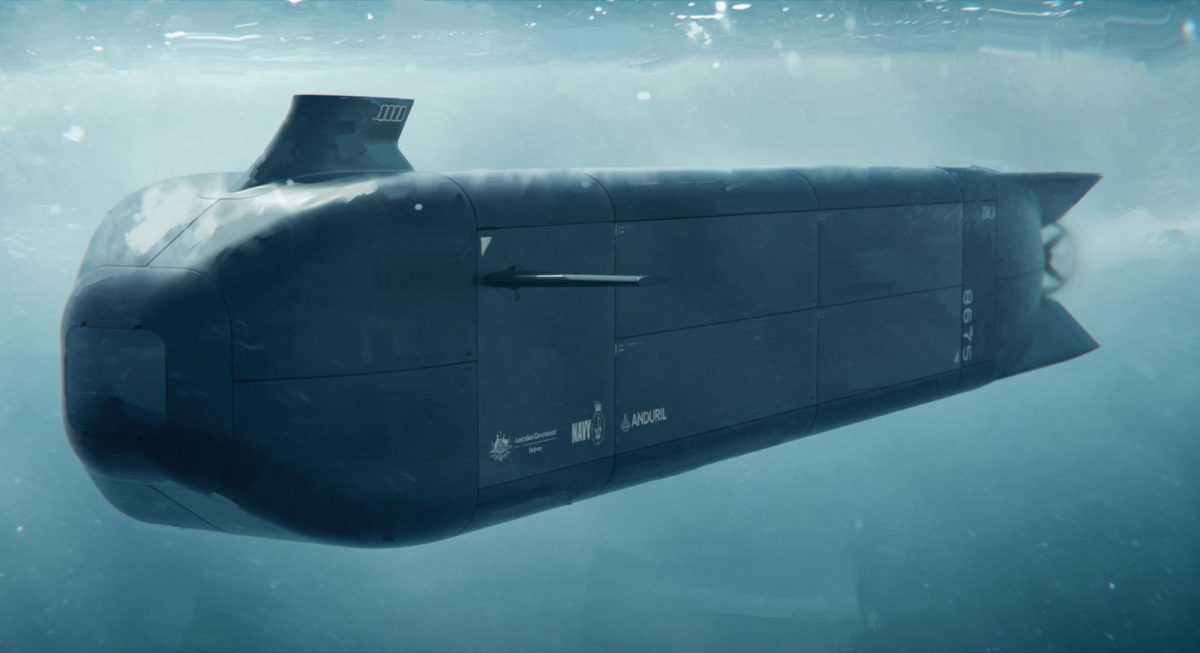
Concept art of an operational Ghost Shark in action. Image: ADF.
Dr Arnott said moving at the speed of relevance was Anduril’s signature.
“For Ghost Shark, we have assembled a unique high-powered engineering team of 121 people from the best-of-Australia, across tech, resources and defence, to fuel this progress,” he said.
“We have 42 Australian companies currently working on Ghost Shark. We plan to manufacture at scale in Australia for the Royal Australian Navy, and then for export to our allies and partners around the world.
“Using novel scaled agile development techniques, we are combining both tech and defence sector development practices – and it’s paying big dividends,” he added.
“Ghost Shark is a program that we as Australians can be very proud of.”


